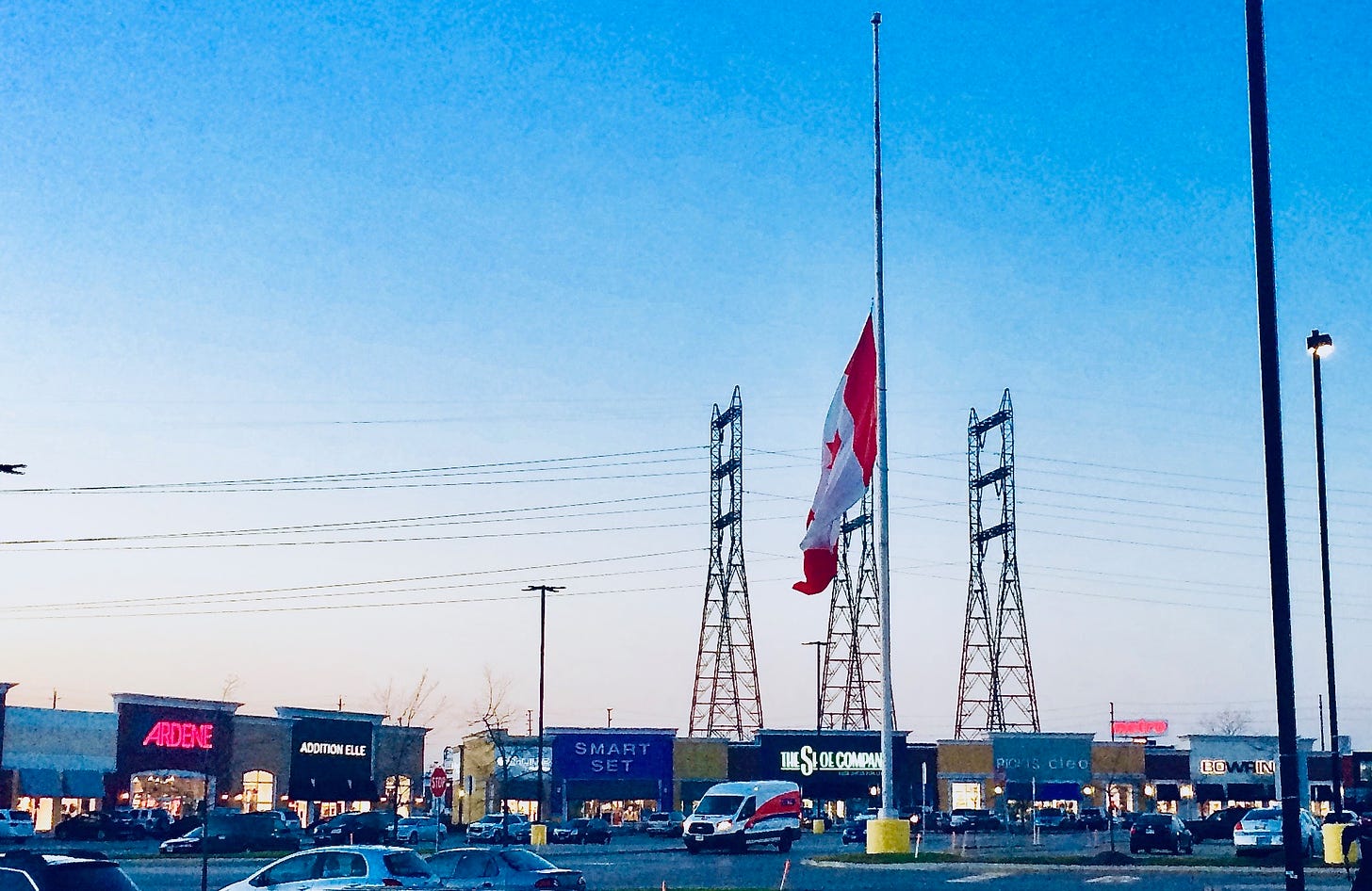AFN should call for Canada's flag to be raised
First Nations didn’t ask for the flags to come down. But they will pay the price for it.

First Nations leaders should call this week for Canada’s national flag to be raised before November 11.
Six months after the maple leaf was lowered to mourn 215 First Nations children found in unmarked graves at a former Indian Residential School in Kamloops, the flag is becoming a symbol of national division and derision. Although First Nations played no part in lowering the flag, they stand to lose the most if it is not returned to its proper place atop Canadian flagpoles.
Lowering the flag is a traditional acknowledgment of mourning for the loss of someone important to the community. There is no denying Canada’s collective grief over the loss of so many First Nations children as a consequence of an ill-advised, even racist, government policy. Lowering the flag was the right thing to do.
Half-masting the national flag is significant because it is unusual. When it becomes the day-to-day norm, the gesture becomes meaningless.
We have long known that First Nations children suffered terribly at Indian Residential Schools. As a matter of past government policy, they were kidnapped from their families, held against their will and force-fed a diet of Christian dogma and “whitification.” Many died from brutality and neglect.
We knew these poor innocents were buried on school property, far from home, often without the knowledge of their families. But it was easy to ignore something that “allegedly” happened so long ago, so far away from our busy, modern lives.
When unmarked graves were located in Kamloops, that irrefutable proof was a tangible gut-punch to our collective conscience. Something we couldn’t ignore.
When the Prime Minister ordered flags be lowered, it was the right thing to do. He knew the next discovery of a grave site would be just days, weeks or months away. So, the question arose: how long to lower the flag?
Protocol clearly specifies how long the national flag should be half-masted under different scenarios. When the Queen dies, flags will be flown at half-mast from the time we learn of her passing until sunset on the day of her funeral. On six special days, including Remembrance Day, the flag is flown at half-mast from sunrise to sunset.
There is no precedent for lowering flags to mourn the deaths of thousands of children under the care of the state. Deciding how many days the flag should be lowered was fraught with political peril. Too few days, or too many, was bound to offend. As is the Trudeau way, he punted.
For the first time in Canada’s history, the national flag was lowered with absolutely no idea when it would be raised again. There still isn’t a date for that. Trudeau remains terrified of offending somebody. He’s paralyzed and needs a way out. The Assembly of First Nations can – and should – give him one. It’s in their interest to do so.
National flags are symbols of pride and unity. Nations literally rally around them. But, right now, the maple leaf is dividing Canadians. That’s a political problem for Trudeau and it’s an existential threat to First Nations.
Most Canadians believe lowering the flag was the right thing to do. But they also believe it’s time to raise it up again. A flag dipped for a day or a week is a badge of mourning for a great person or people lost. A flag dipped in perpetuity is a badge of shame that fast becomes irrelevant.
The majority of Canadians are proud, not ashamed, of their country. The longer the flags remain lowered, the more people will forget why they were lowered in the first place — the more people will be angry they haven’t been raised. Inevitably, some of that anger will focus unfairly on First Nations.
At a time when Canadians should be coming together to deal fairly and constructively with First Nations, the flags have become another point of friction between our two worlds. First Nations didn’t ask for the flags to come down. But they will pay the price for it.
At their executive meeting this week, leaders of the Assembly of First Nations should act to avoid becoming the bad guy in the flag debate. They should publicly call on Prime Minister Trudeau to return the flag to its rightful place and to instead designate Canada’s new National Day for Truth and Reconciliation, observed for the first time this past September 30, as one of the special days Canada’s flag is to be flown at half-mast.
That puts the AFN in a good position: they avoid being the bad guy, earn the thanks of all Canadians and leave the prime minister owing them one.
It’s the right thing to do.



